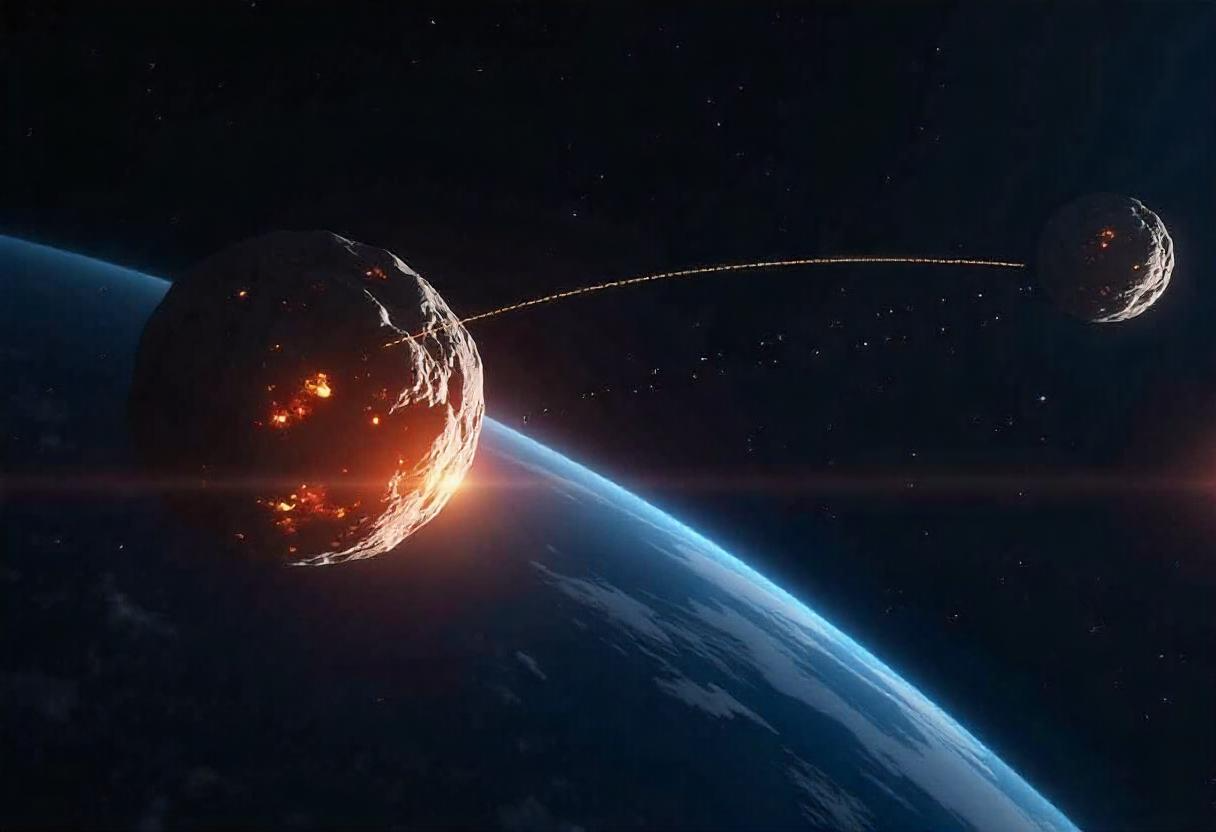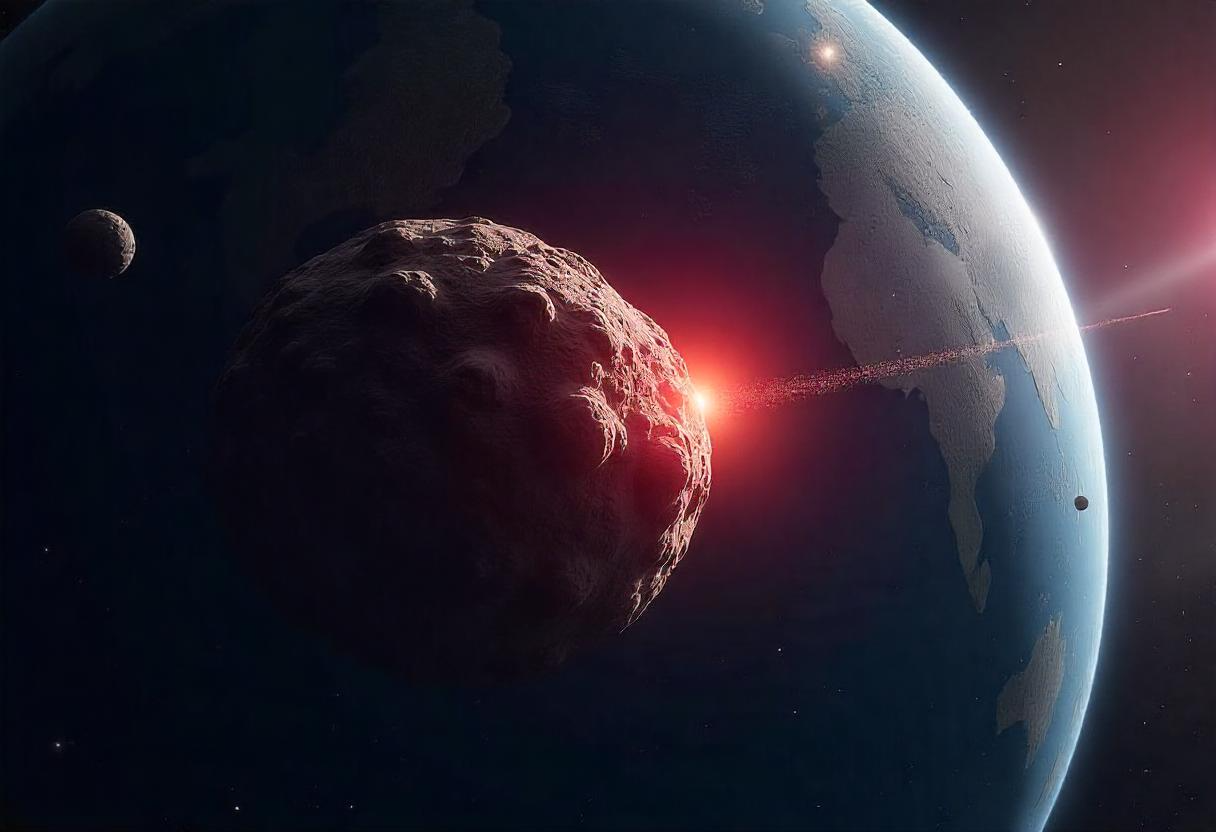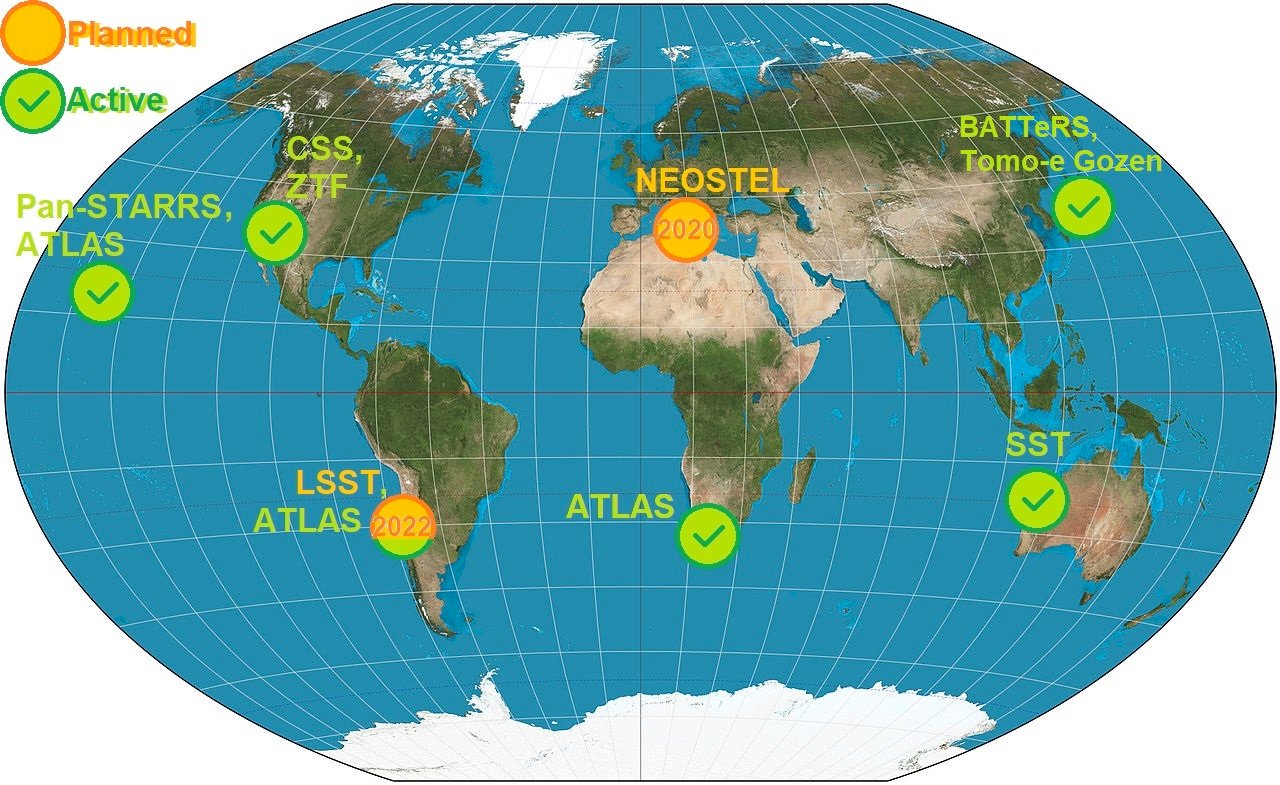
It was never a question of whether it was going to happen or not, but rather when it was going to happen, perhaps it will not be this asteroid that was recently discovered, but it will be one, it is inevitable, the important thing is to have planetary defense measures or emergency plans. at worst.
I always tell you on the topic of asteroids that we have almost all located those larger than 1 km and we know that they are not going to give us problems in the next 100 or 200 years but that the danger is in the small ones, those smaller than 150 m and there are still many to be discovered and some can give us a scare, and we now have one discovered at the end of December 2024 YR4 that is one of those that scares us.
There are also comets, a new one can always appear that comes from the outer regions of the solar system and also gives us another scare, but luckily the larger a comet is, the easier it is to detect it and therefore also the more years we would have to react, the question As in everything, it means not standing idly by, acting, overcoming the challenge.

Many tabloid media are going to paint it as the coming Apocalypse, “don't look up” or “the end of mass extinction”, no, at worst it will be a regional disaster, which raises another question, Who is going to pay for this? Yes, it sounds harsh, but in the end all this has a cost, such as the Atlas network, which is one of the most important networks.
In addition, there are amateurs capable of detecting asteroids, it would not be the first time that an amateur discovers an asteroid, but the Atlas network is specialized for hunting asteroids and comets, and its acronym in English is the last alert system for terrestrial impact of asteroids, it is an asteroid impact early warning system developed by the University of Hawaii and funded by NASA.
It is made up of four observatories, two in Hawaii, one in Chile that is very important and another in South Africa, more will be added soon, they are not the only ones, the Atlas system also discovers asteroids and comets, it would be in the event that a comet or an asteroid on a collision course with the earth, the Atlas astronomers would be among the first to detect them and sound the alarm as in this case and this is the reason why lately there are so many asteroids and comets like, for example, the last one comet that has been so visible and photographed in the southern hemisphere especially that it bears the name Atlas in its name.
The Atlas observatory discovered this asteroid on December 27 of last year and the person who discovered it was precisely the one in Chile, Río Hurtado, 2024 YR4 passed that day, December 25, about 828775 km from us, that is almost double of the distance that separates the earth from the moon, it did a speed of 133.7 km per second or 49320 km per hour, it was a more than safe step, but close enough to to be able to detect it and thought we were lucky.
It will surely have an irregular shape, approximately 40 to 90 m in diameter, this is the estimate we have now, because it is based on the brightness. To determine its size more precisely, it would be necessary to make more observations with thermal methods, infrared, and radar observations. or images of a spacecraft if one could approach this asteroid, right now you cannot do any of those things since it is a small asteroid and it is moving away from us and we are going to have it annoying.
We were lucky that at the end of December it passed close to the Earth because the next approach would be on December 17, 2028 at between 8 to 7 million kilometers at that distance perhaps they would not have been able to detect it and the next one will be the critical pass on the 22nd. December 2032, that yes, which could be the Christmas jackpot draw with a 1.3% probability of impact with the earth, is small but not zero.
ESP
Nunca fue una cuestión de si iba a suceder o no, sino más bien de cuándo iba a suceder. Tal vez no sea este asteroide que se descubrió recientemente, pero será uno, es inevitable. Lo importante es contar con medidas de defensa planetaria o planes de emergencia en el peor de los casos.
Siempre te digo en el tema de los asteroides que casi todos los que miden más de 1 km ya están localizados y sabemos que no nos van a causar problemas en los próximos 100 o 200 años. Pero el peligro está en los pequeños, aquellos de menos de 150 m, de los cuales aún quedan muchos por descubrir, y algunos pueden darnos un susto. Ahora tenemos uno descubierto a finales de diciembre, el 2024 YR4, que es de esos que nos asustan.
También están los cometas. Siempre puede aparecer uno nuevo que venga desde las regiones exteriores del sistema solar y nos dé otro susto. Pero, afortunadamente, cuanto más grande es un cometa, más fácil es detectarlo y, por lo tanto, más años tendríamos para reaccionar. La cuestión, como en todo, es no quedarse de brazos cruzados, sino actuar y superar el desafío.
Muchos medios sensacionalistas lo van a pintar como el Apocalipsis que se avecina, "No mires arriba" o "El fin por extinción masiva". No, en el peor de los casos sería un desastre regional, lo que plantea otra cuestión: ¿Quién va a pagar por esto? Sí, suena duro, pero al final todo esto tiene un costo, como la red Atlas, que es una de las redes más importantes.
Además, hay aficionados capaces de detectar asteroides. No sería la primera vez que un astrónomo aficionado descubre uno. Sin embargo, la red Atlas está especializada en la caza de asteroides y cometas. Sus siglas en inglés significan "Último Sistema de Alerta de Impacto Terrestre de Asteroides", un sistema de alerta temprana desarrollado por la Universidad de Hawái y financiado por la NASA.
Está compuesto por cuatro observatorios: dos en Hawái, uno en Chile (muy importante) y otro en Sudáfrica. Pronto se sumarán más. No son los únicos, pero el sistema Atlas también descubre asteroides y cometas. En caso de que un cometa o un asteroide estuviera en curso de colisión con la Tierra, los astrónomos de Atlas serían de los primeros en detectarlo y dar la alarma, como en este caso. Por eso últimamente hay tantos asteroides y cometas descubiertos, como el último cometa que ha sido tan visible y fotografiado en el hemisferio sur, que lleva el nombre Atlas.
El observatorio Atlas descubrió este asteroide el 27 de diciembre del año pasado, y quien lo detectó fue precisamente el observatorio en Chile, en Río Hurtado. El 2024 YR4 pasó ese día, 25 de diciembre, a unos 828,775 km de nosotros, casi el doble de la distancia entre la Tierra y la Luna. Se movía a una velocidad de 133.7 km por segundo o 49,320 km por hora. Fue un paso más que seguro, pero lo suficientemente cercano como para detectarlo, y podemos decir que tuvimos suerte.
Seguramente tenga una forma irregular y un diámetro estimado entre 40 y 90 metros, según su brillo actual. Para determinar su tamaño con mayor precisión, serían necesarias más observaciones con métodos térmicos, infrarrojos y radares, o imágenes de una nave espacial si fuera posible acercarse a él. Pero ahora mismo no se puede hacer ninguna de esas cosas, ya que es un asteroide pequeño que se aleja de nosotros, y lo vamos a perder de vista.
Tuvimos suerte de que a finales de diciembre pasara cerca de la Tierra, porque su próxima aproximación será el 17 de diciembre de 2028, a una distancia de entre 7 y 8 millones de kilómetros. A esa distancia, tal vez no habríamos podido detectarlo. Pero la siguiente será el paso crítico: el 22 de diciembre de 2032, cuando habrá una probabilidad de impacto del 1.3%. Es pequeña, pero no es cero.
The images without reference were created with AI
